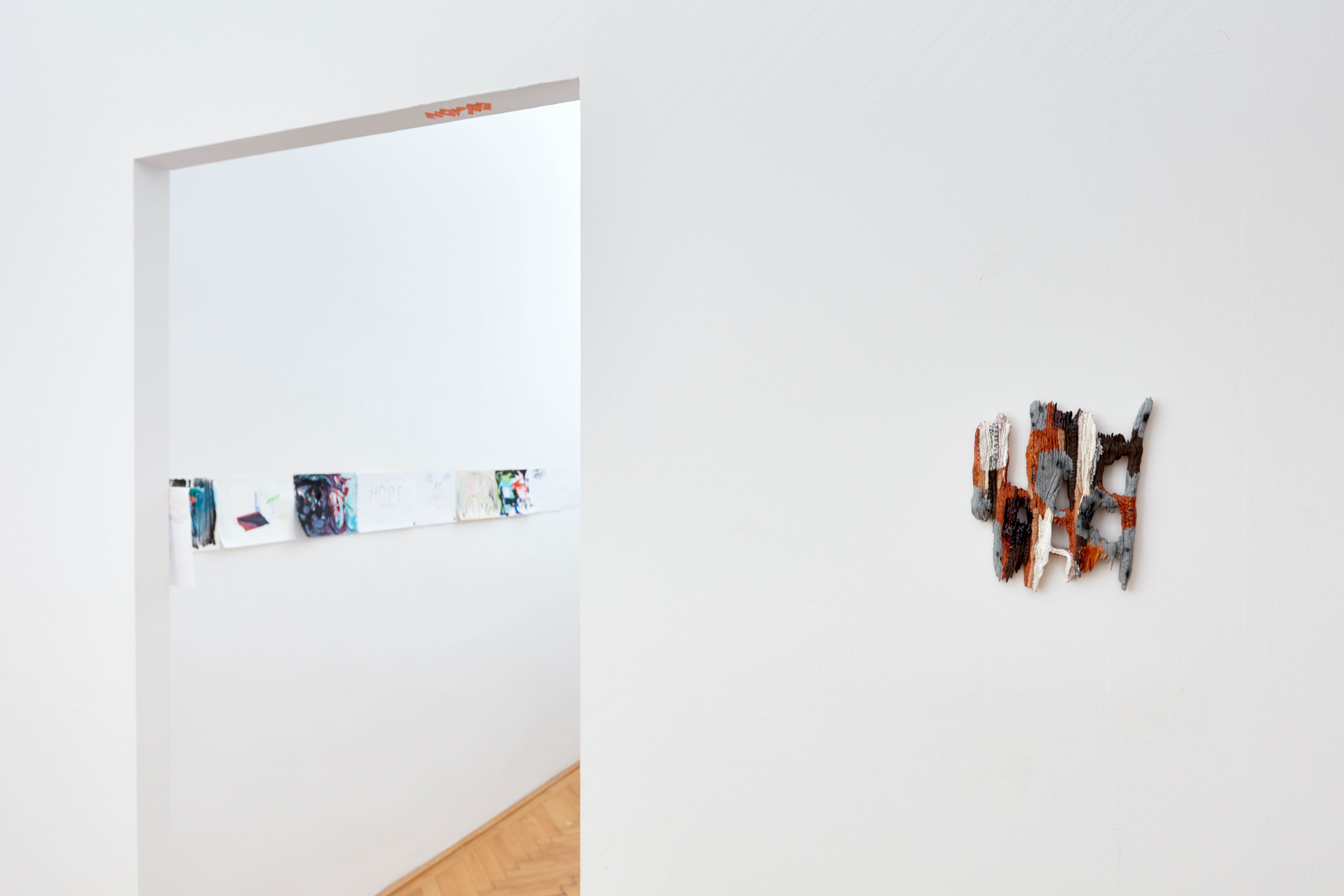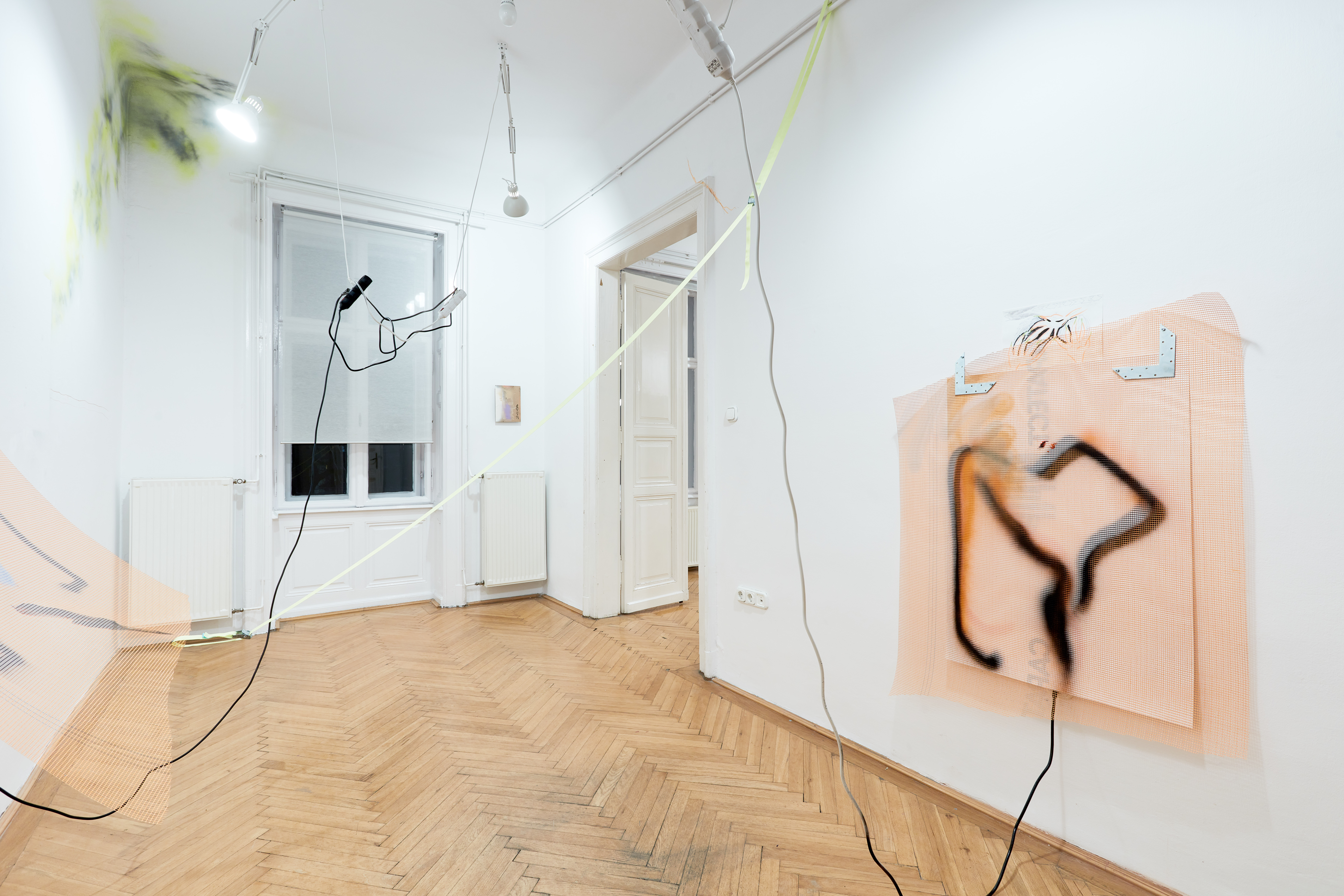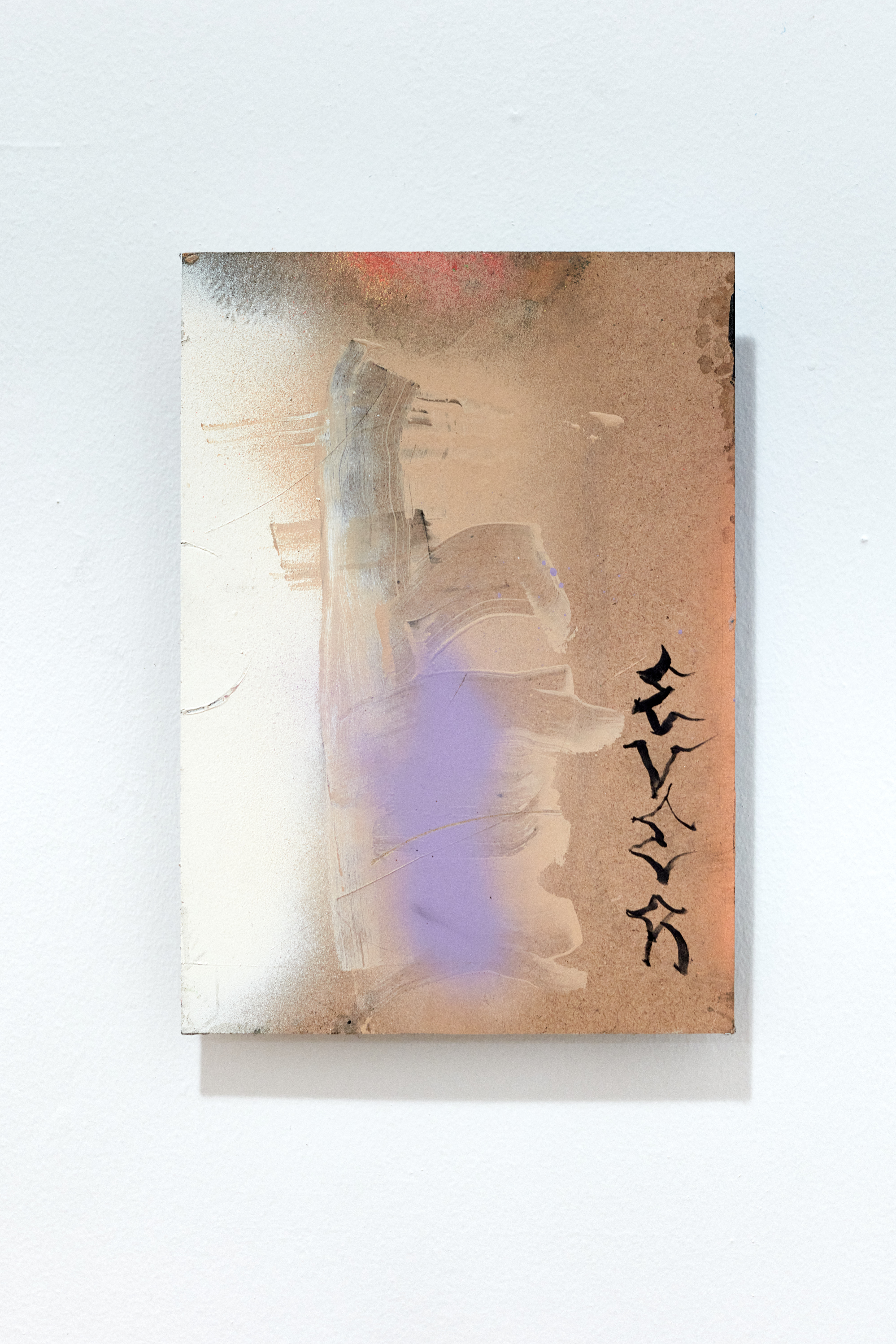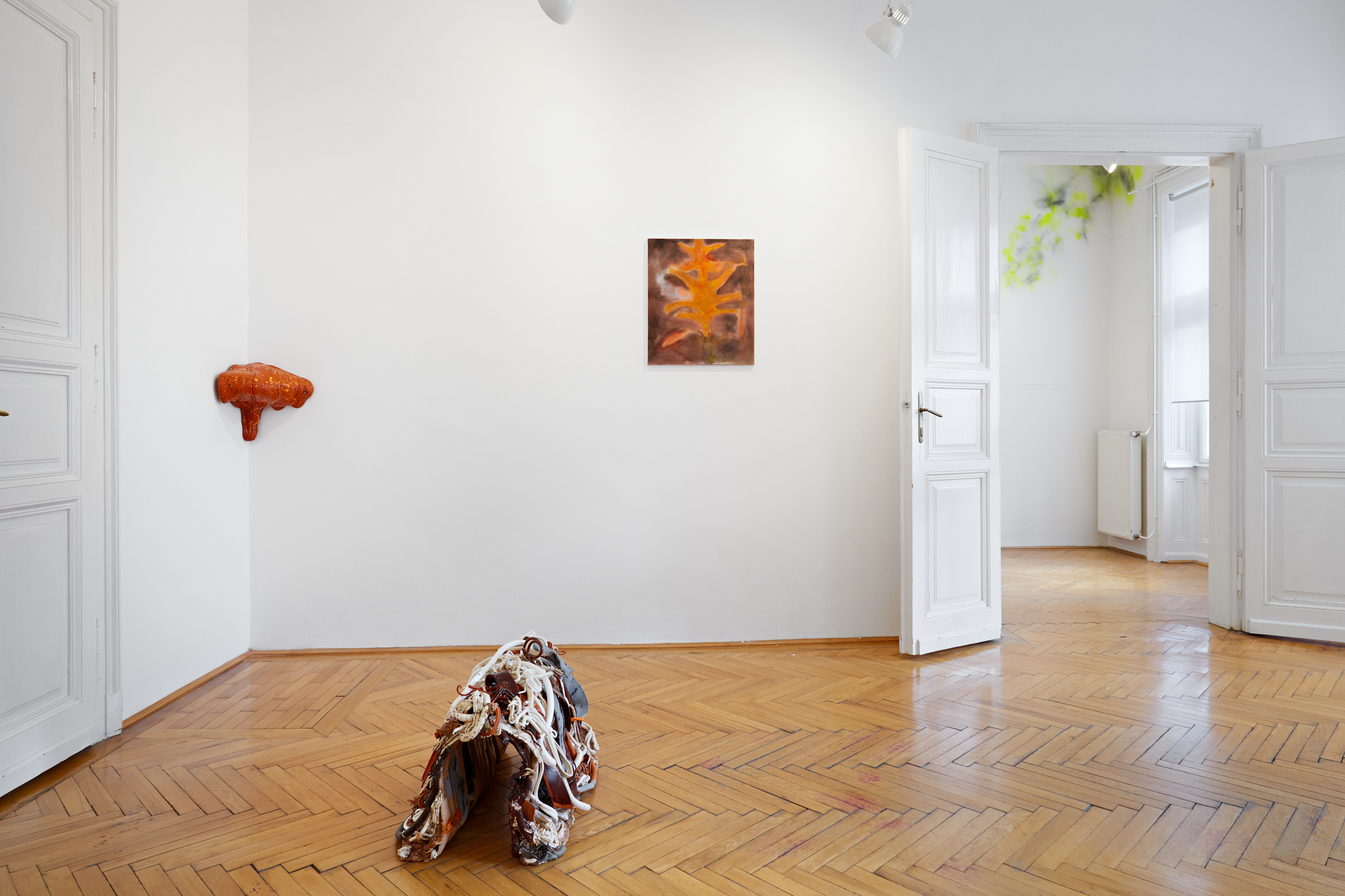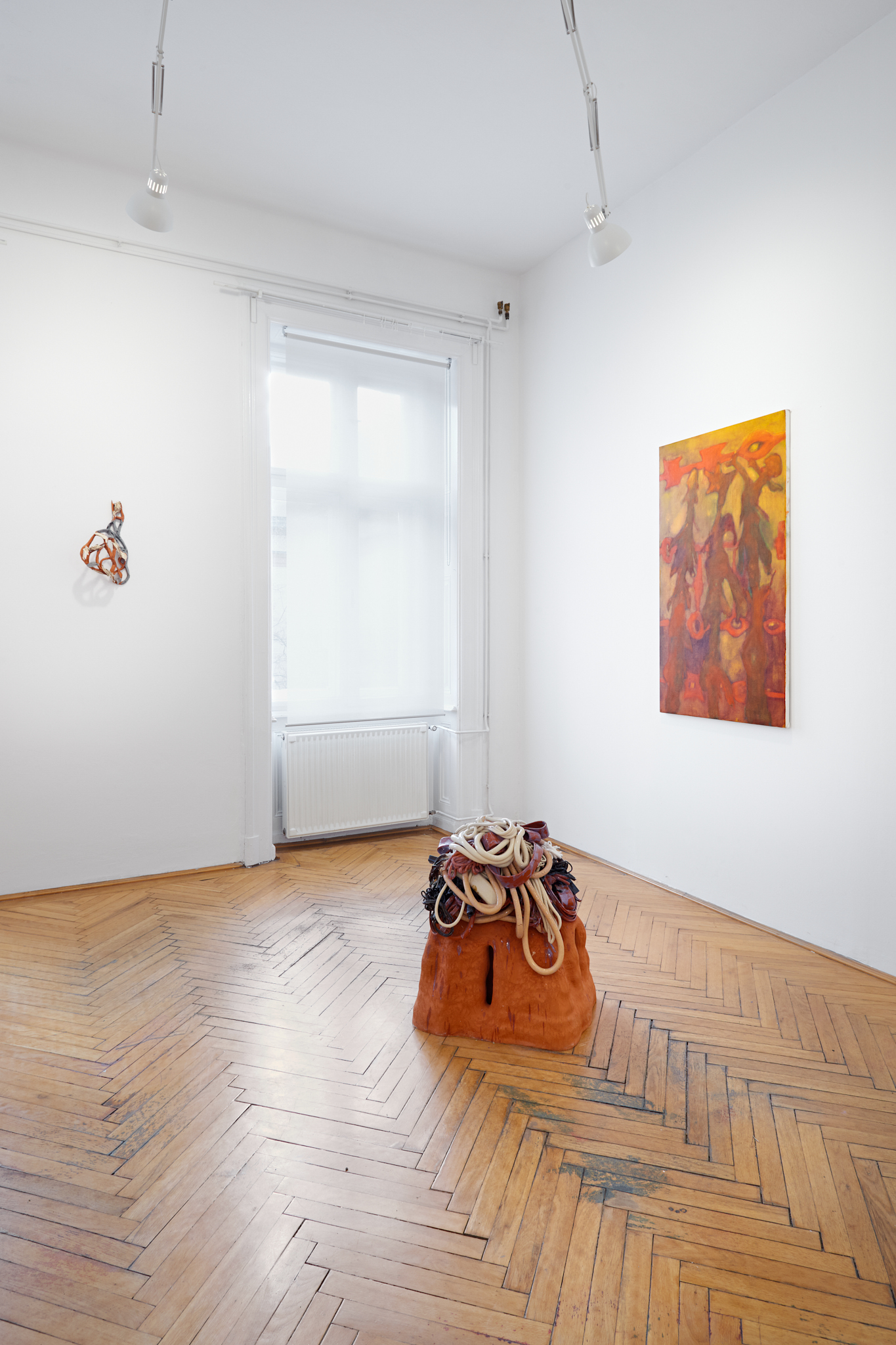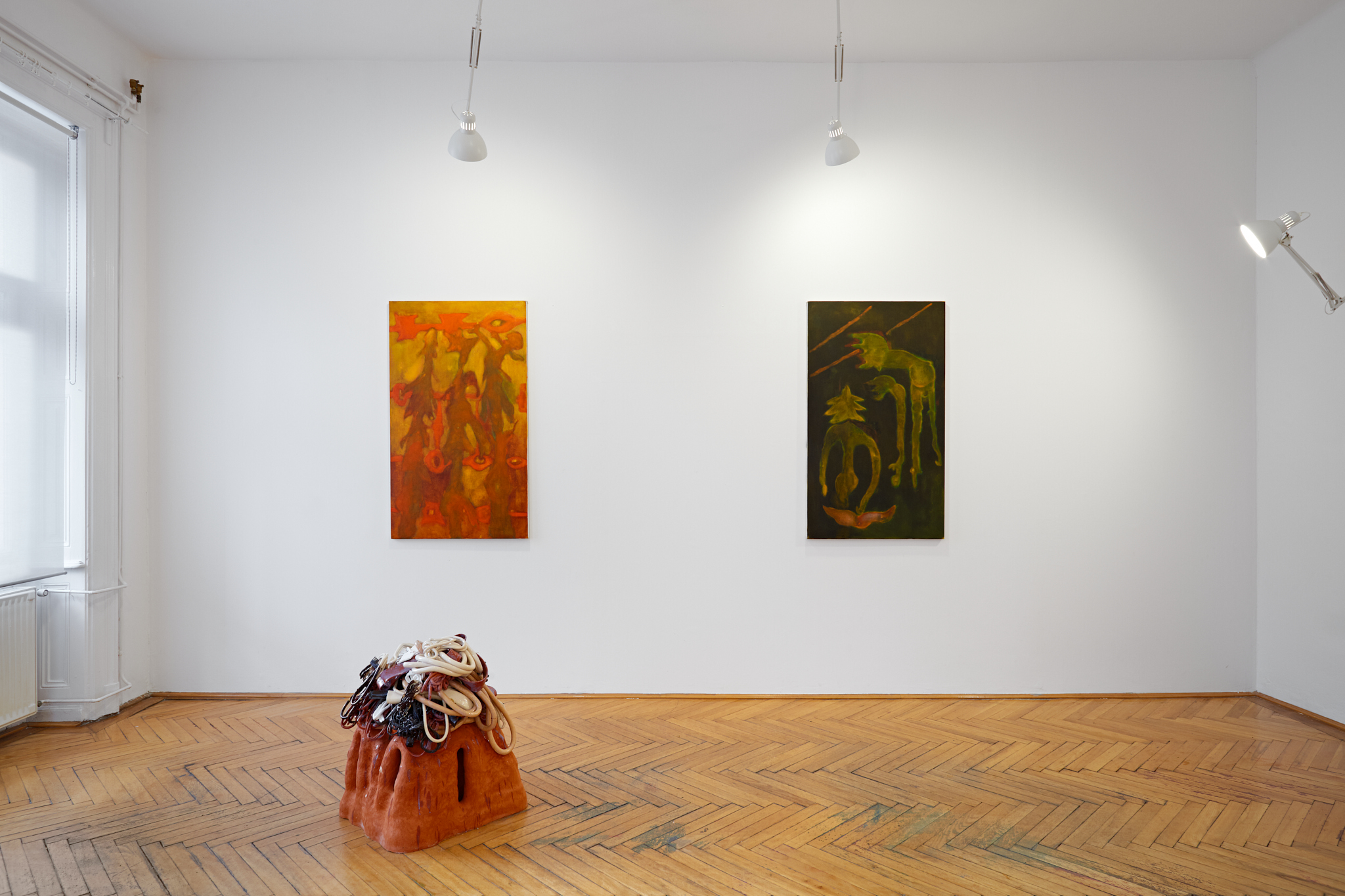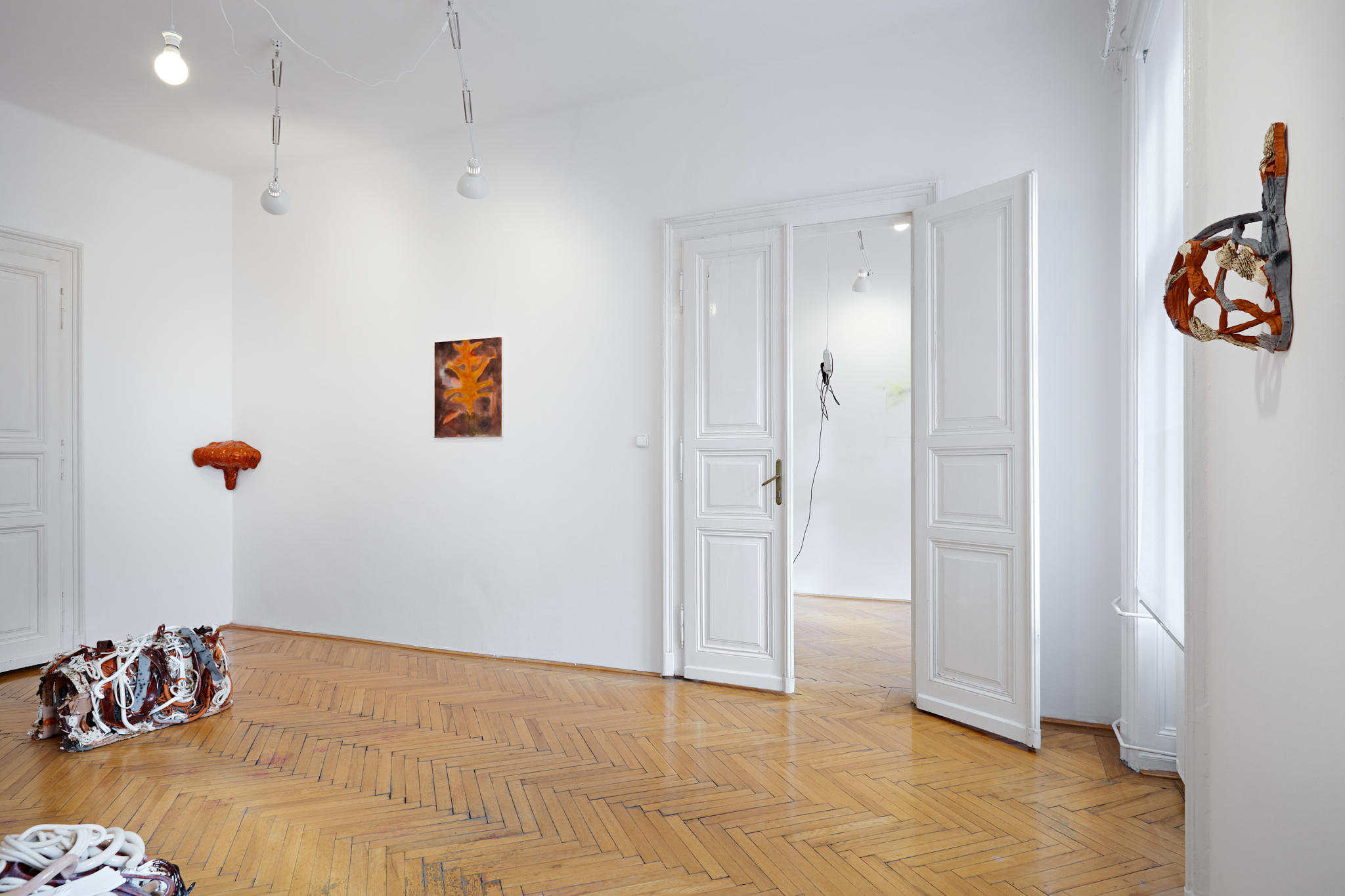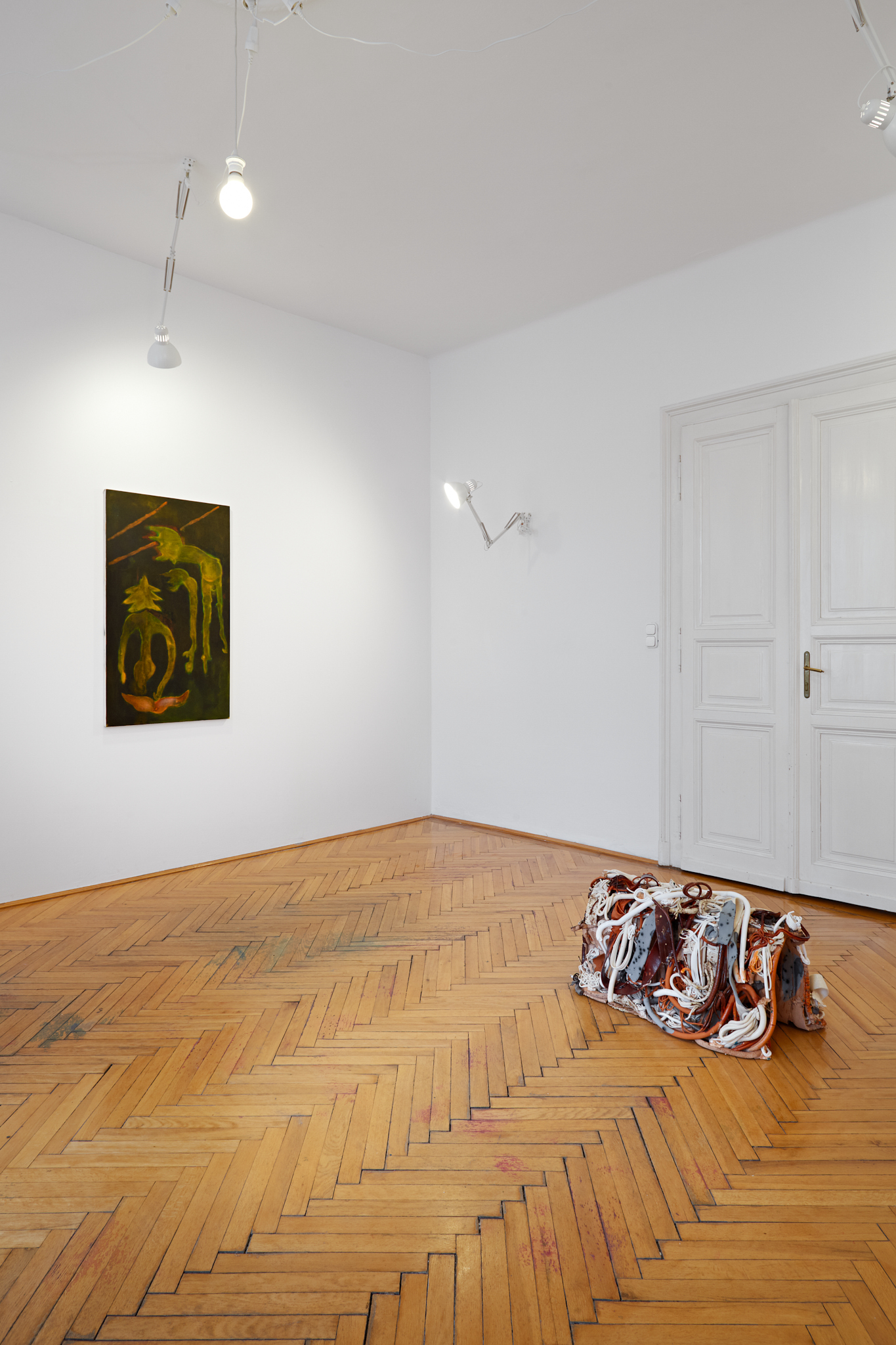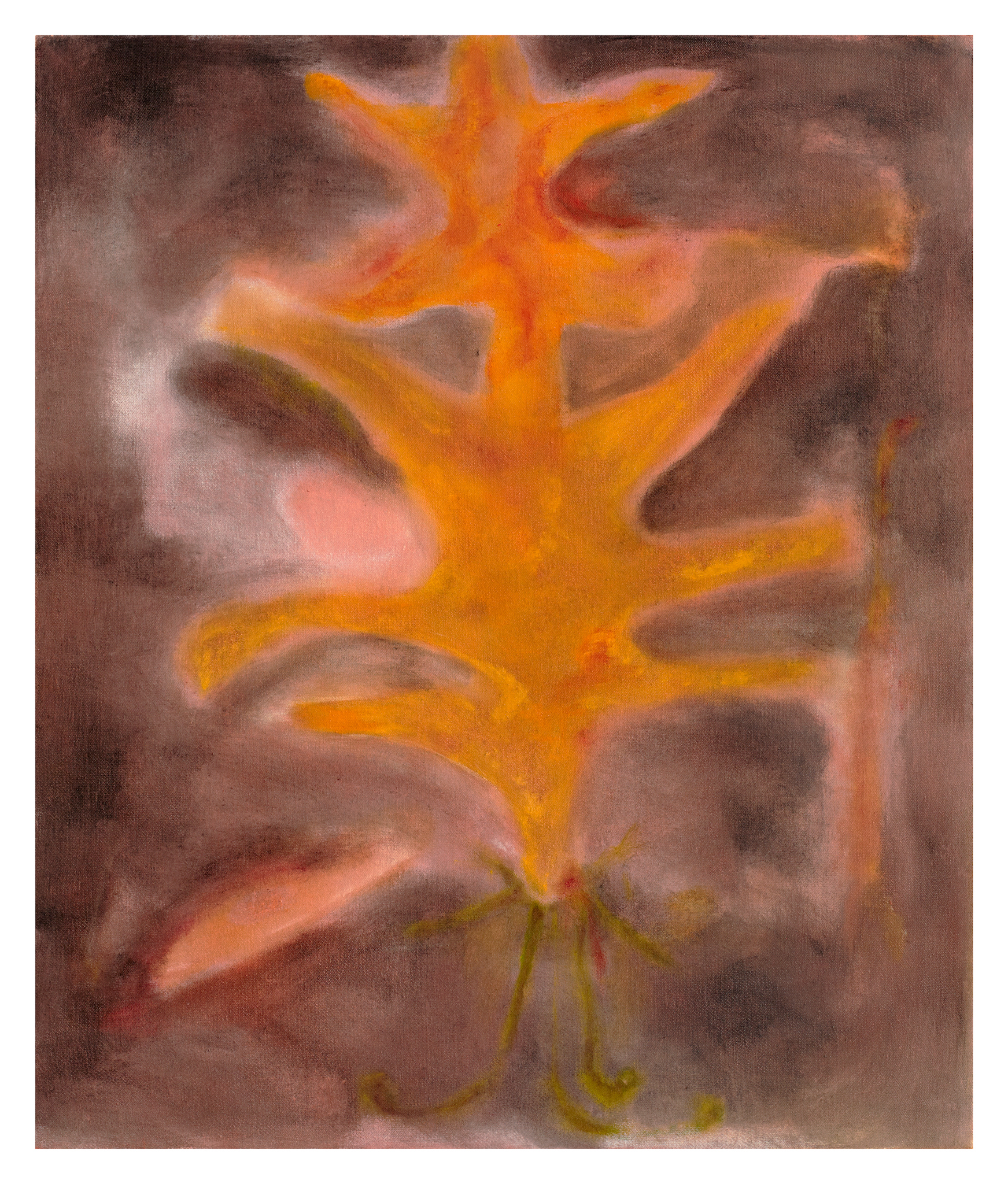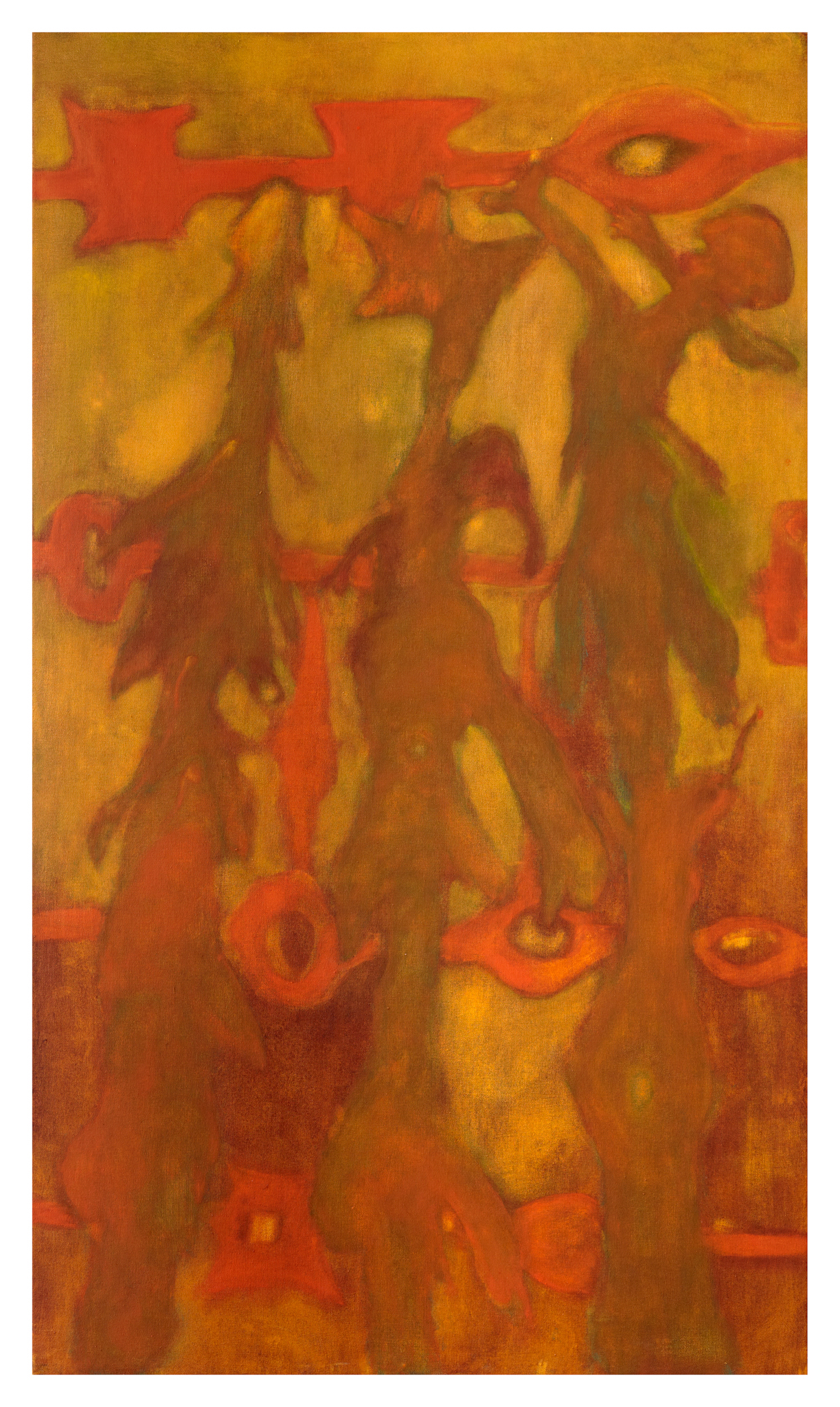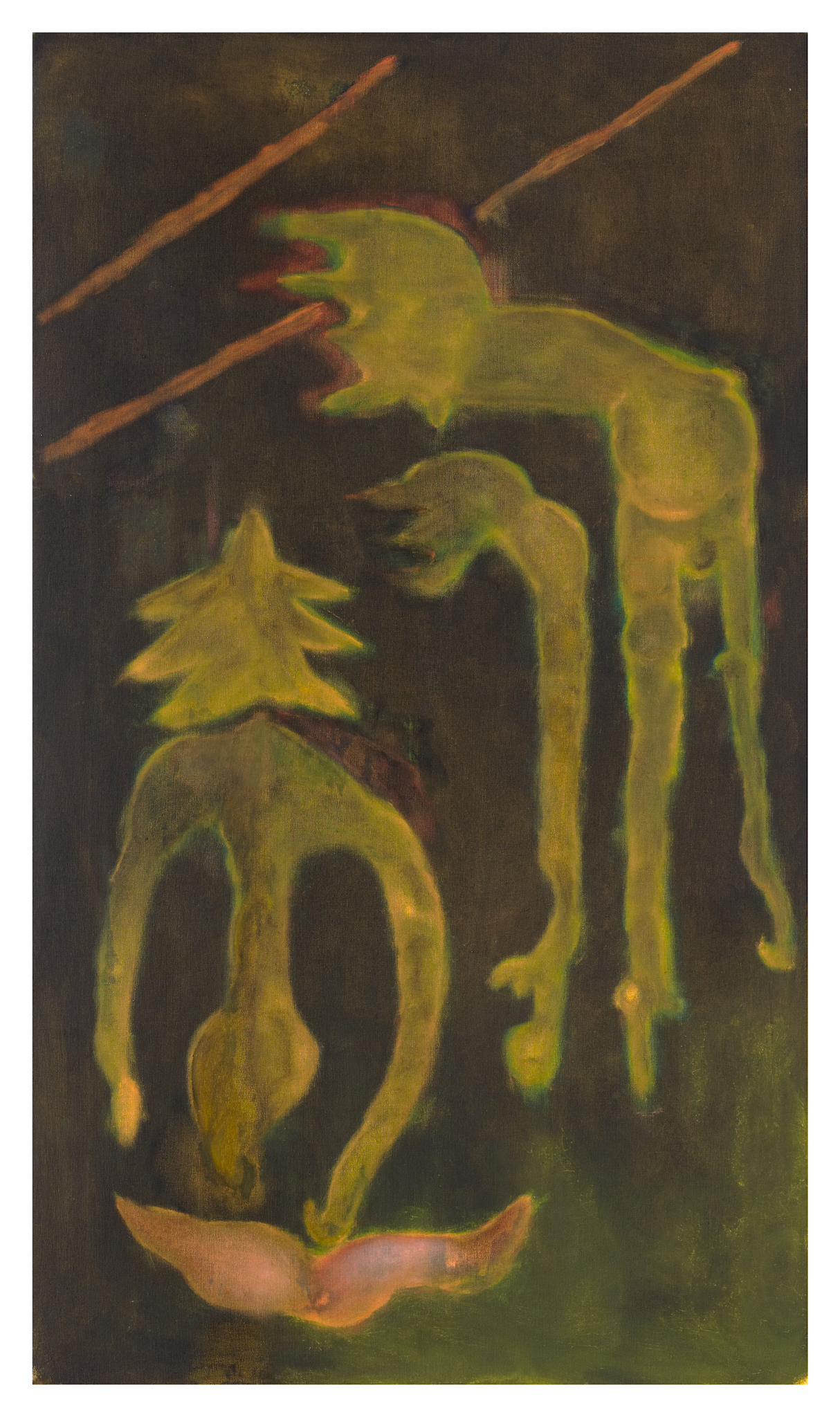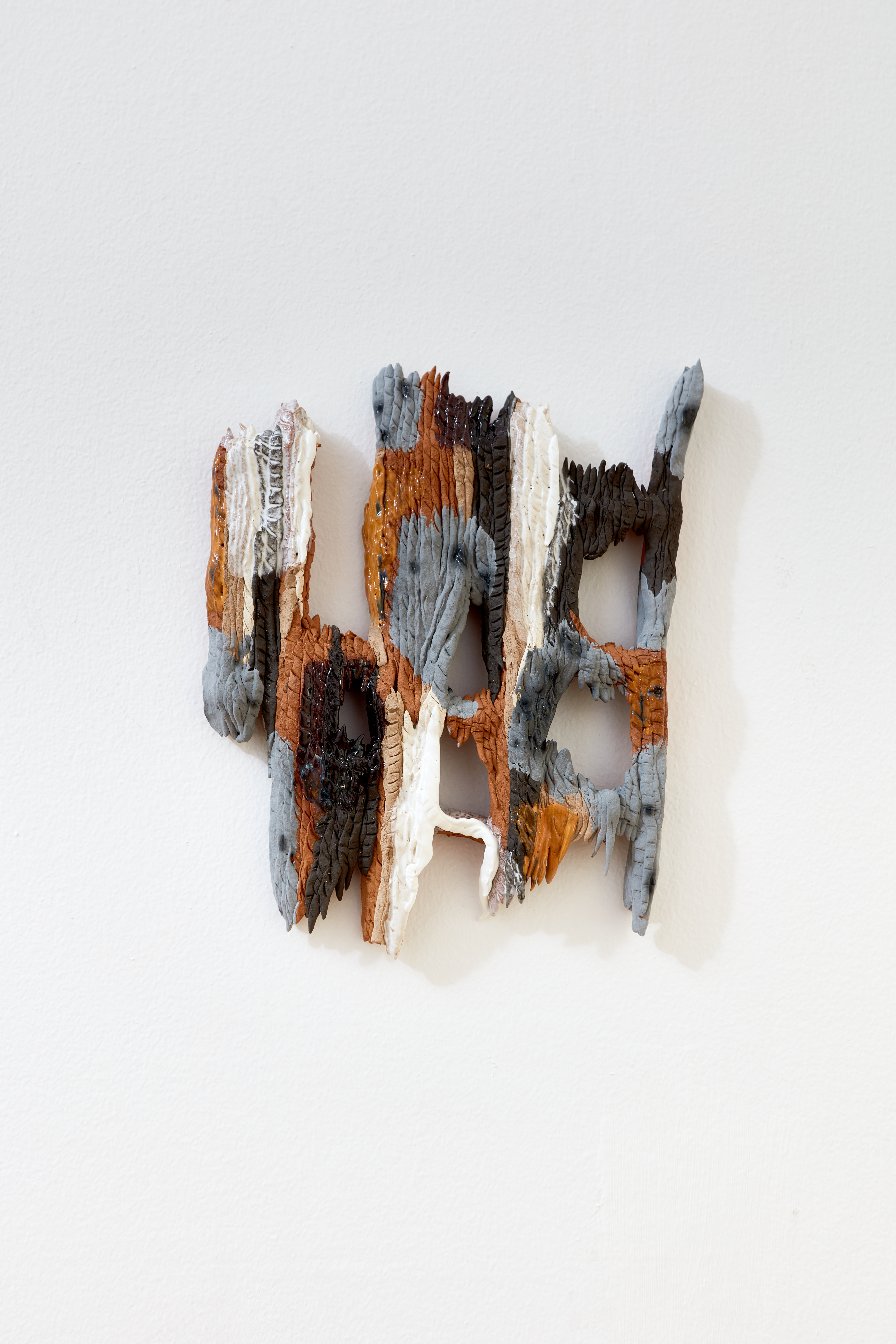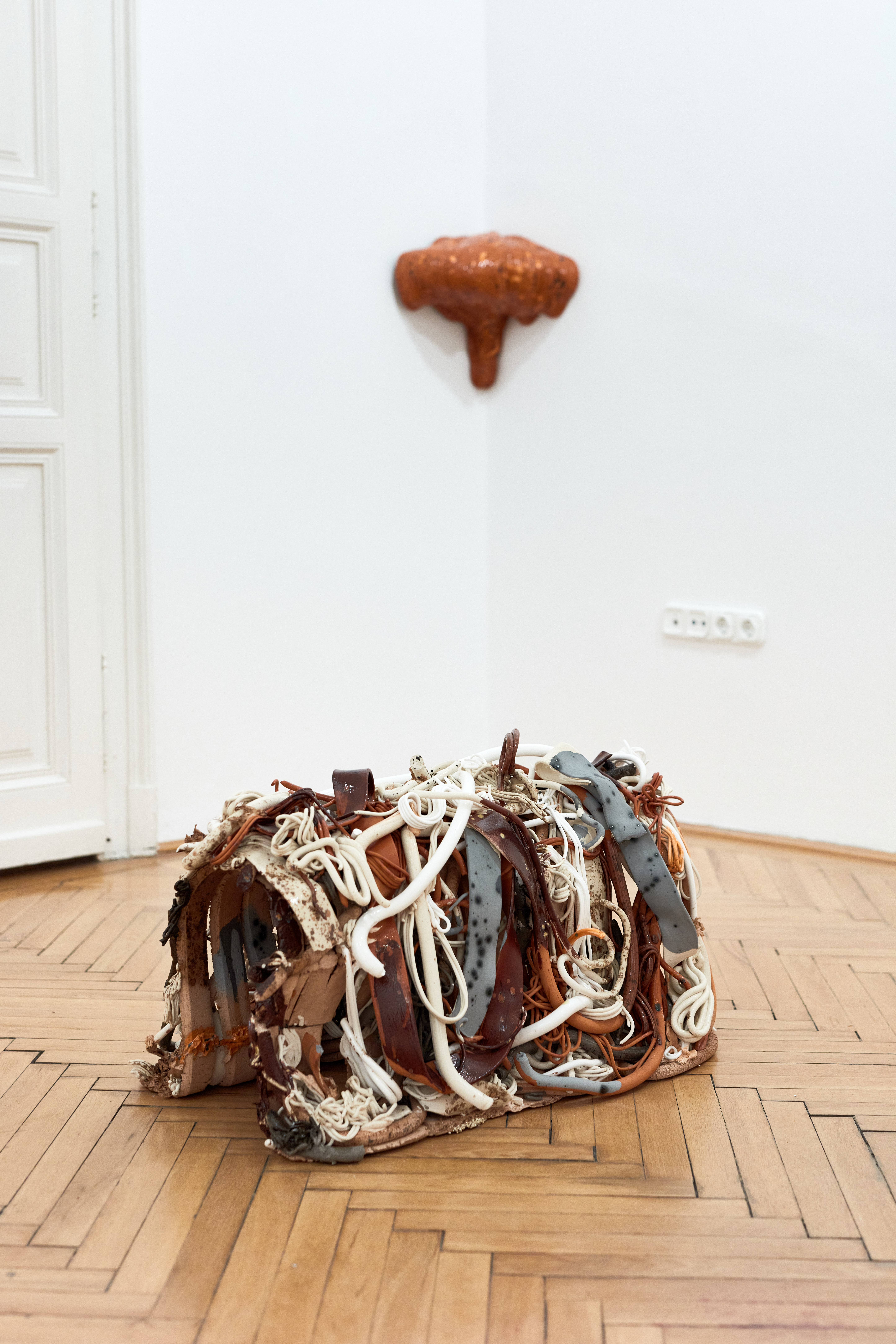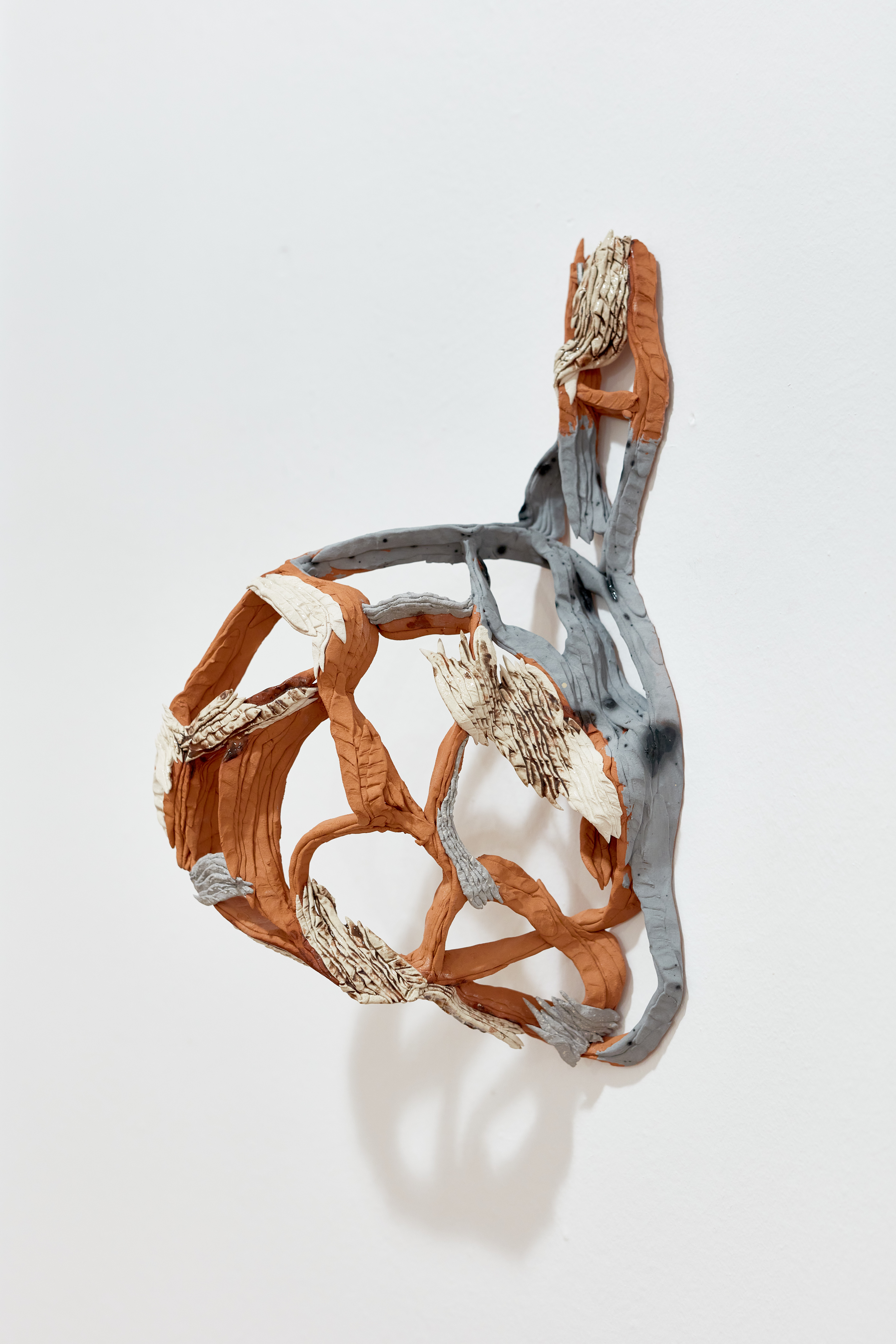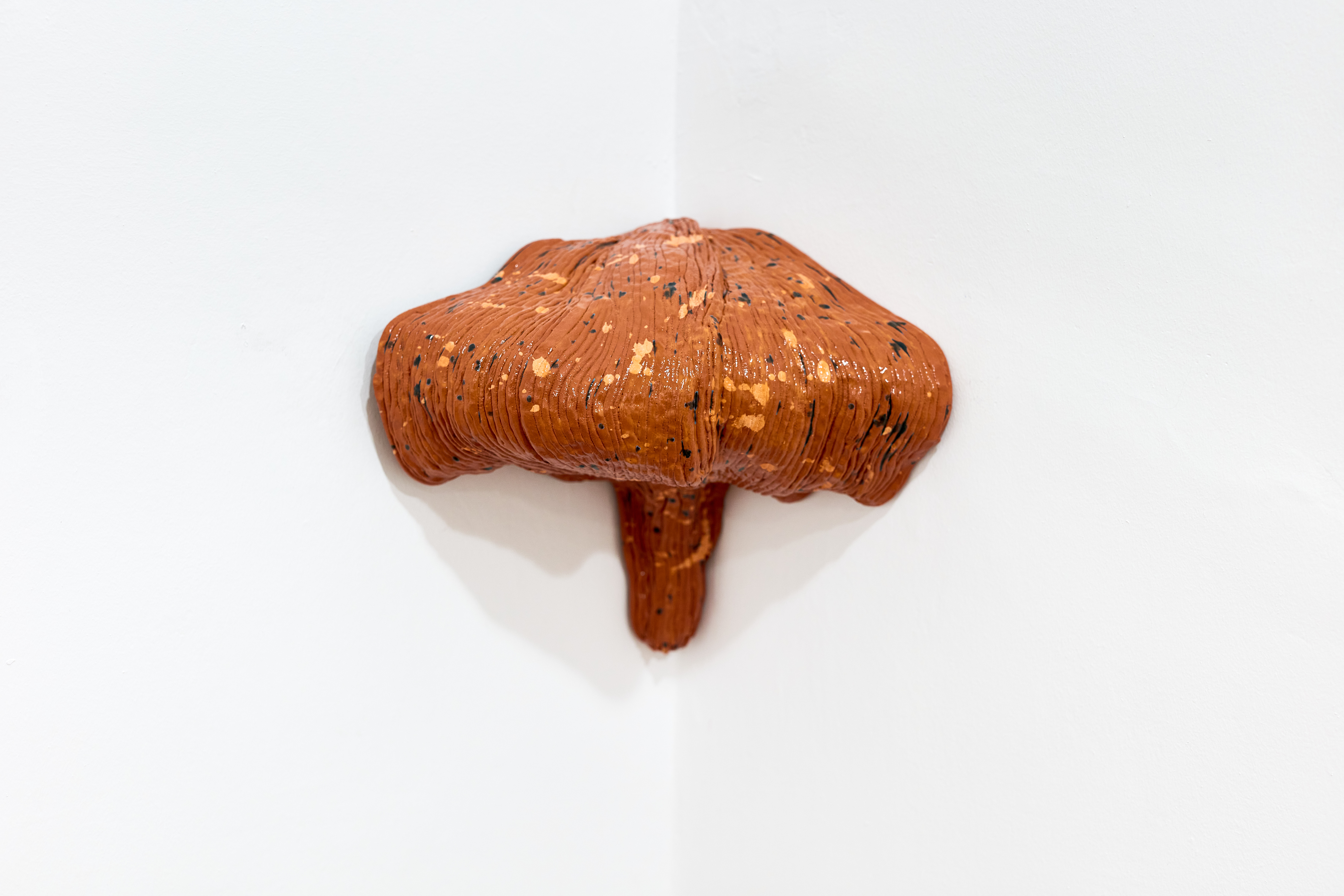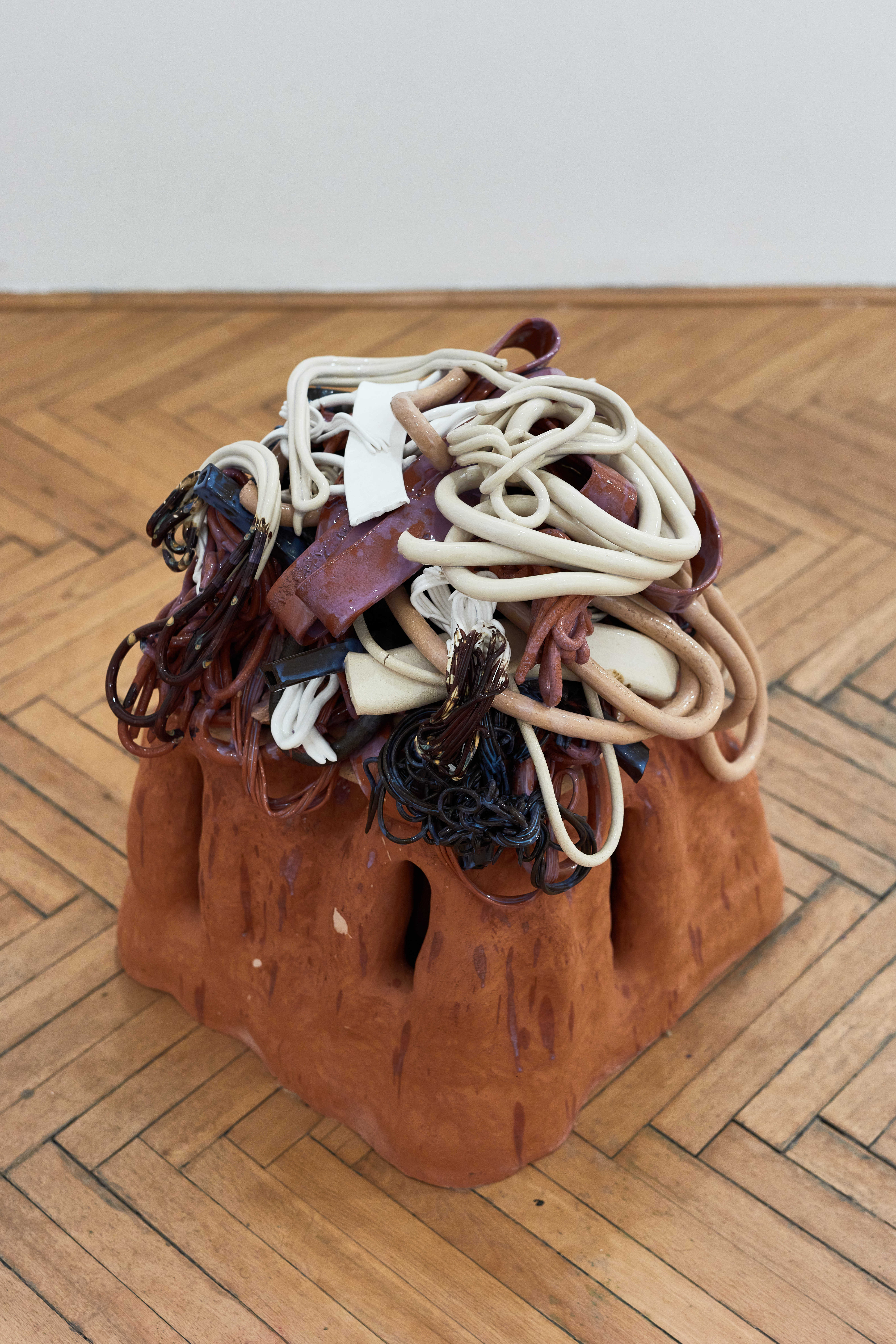Artists: LEGION- Borsos Lőrinc feat. Lakatos Gelléri Barnabás, Laura Pöld, Ádám Ulbert
Title: Global crises, local relationships
Curator: Fruzsina Kigyós
Photos: Dávid Bíró, Áron Wéber
As the role and place of art has been continuously redefined in recent times, the exhibition series entitled Global Crises, Local Relationships aims to bring regional artists of the youngest generation into the picture through not only a context-generating, but also a generational group exhibition. Organised in two sections, the exhibition explores fresh contemporary positions and focuses on personal narratives examined through the lens of collective crisis, as well as the diverse relationships we develop with our environment. The exhibition aims to highlight the importance of maintaining and sharing different forms of knowledge, and to make us rethink our ideas about the future.
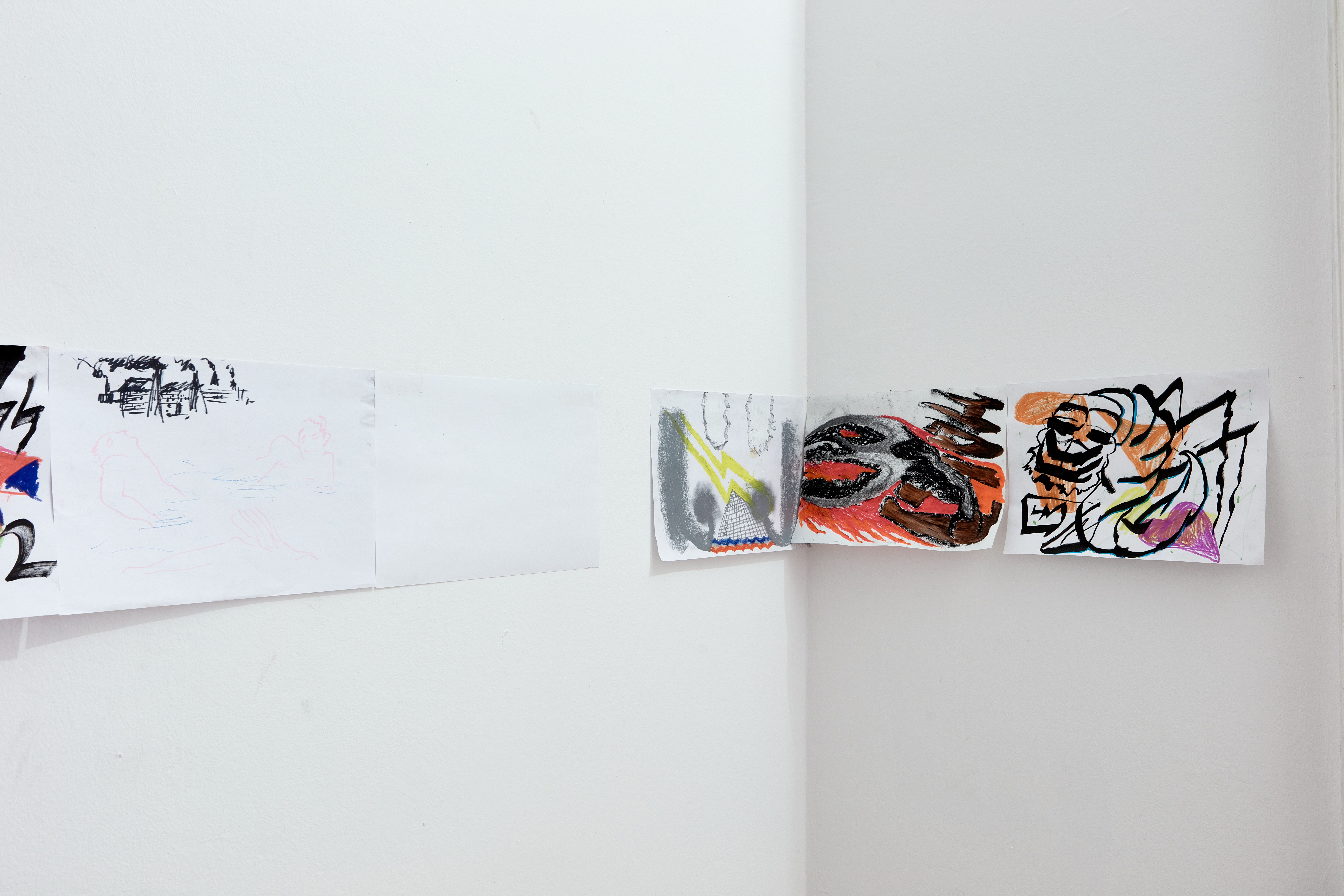
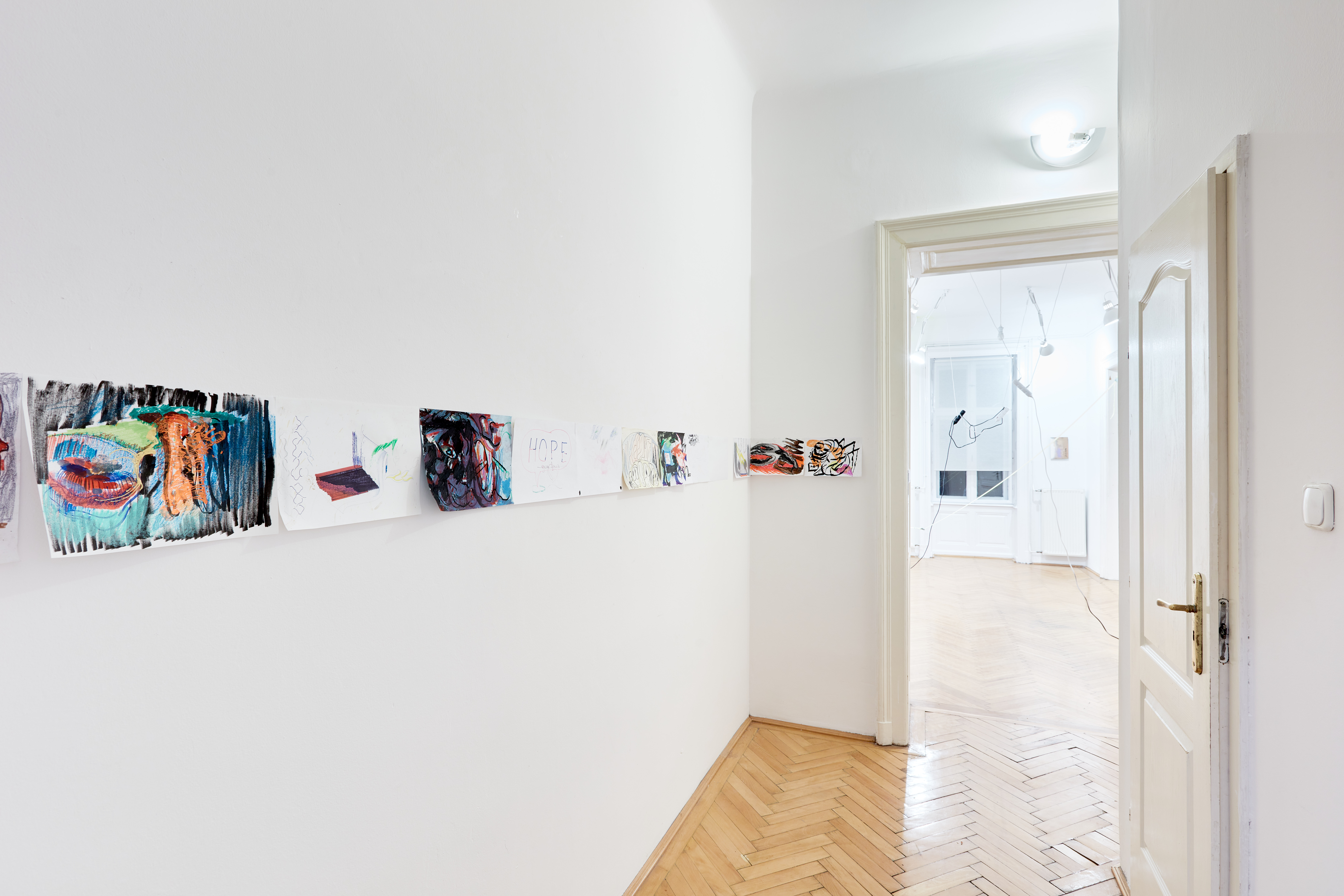
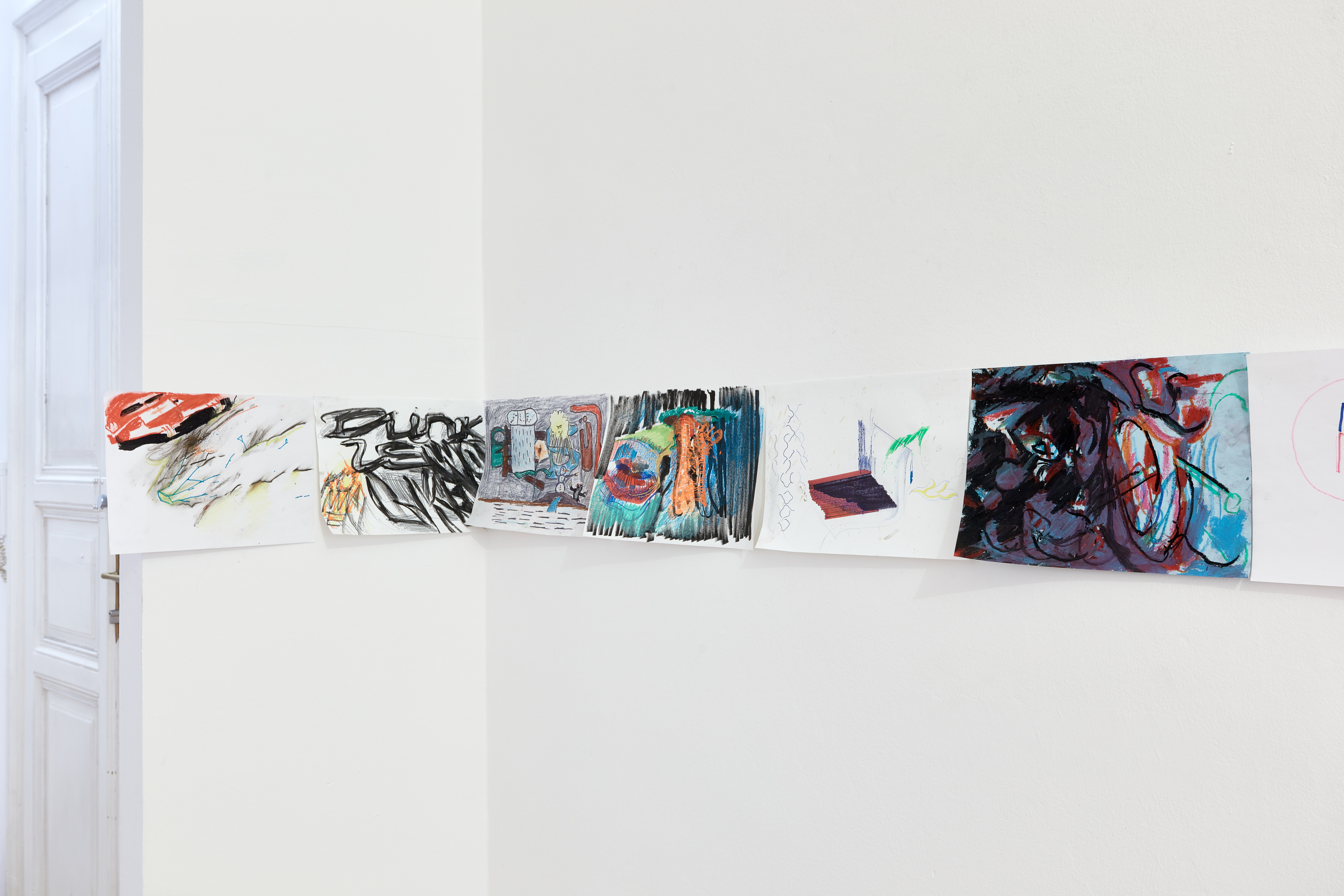
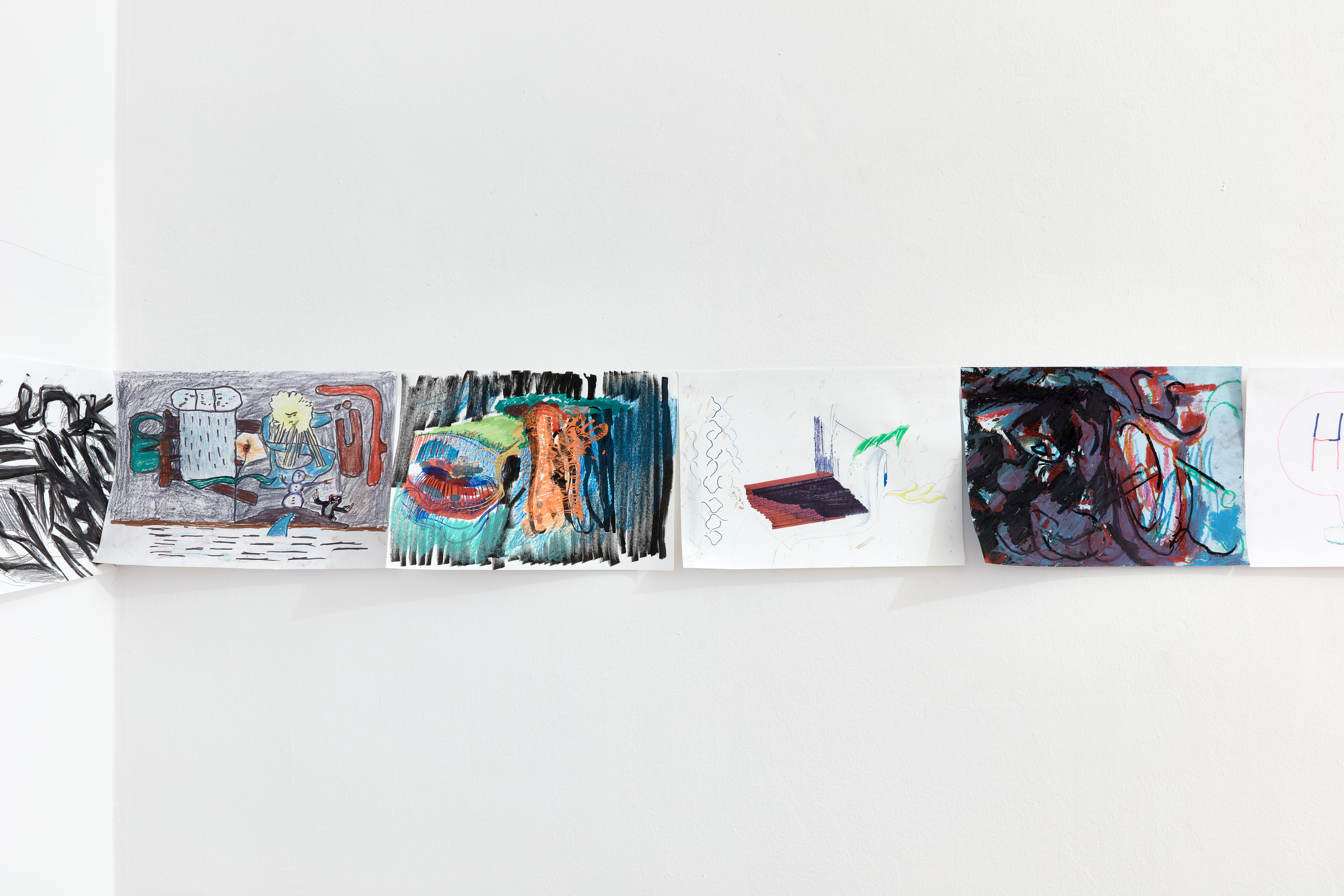
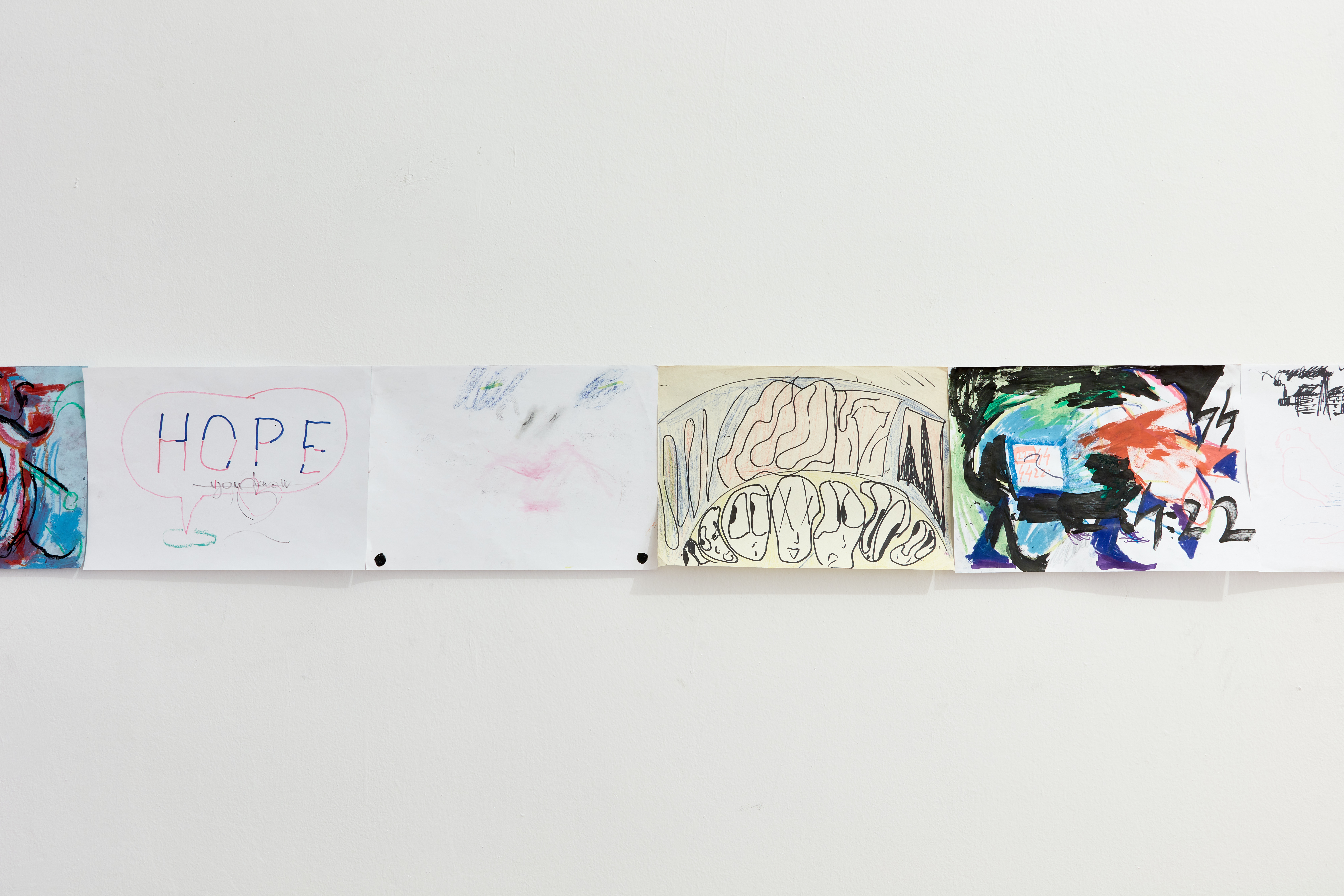
LEGION
LEGION: Hope (You Know) / Borsos Lőrinc feat. Lakatos Gelléri Barnabás
LEGION is an artistic community of varying composition that formed in 2019. It has developed from the collective drawing workshops held regularly in Lőrinc Borsos’ studio. The spontaneous, collective creations and their untangled spiritual threads have become a field for therapeutic exercises.
more artists: Borsos János, Feles Dániel, Gerván Roland, Horváth Orsolya, Keresztesi Botond, Kovács Máté, Maloschik Márk, Spitzmüller Róbert, Stachu Szumski, Kópházi Dániel, Nagy Eszter, Nyíró Gáspár, Tremmel Márk
artists: Feles Dániel, Florian Pfaffenberger, Görcz Andrea, Grész Renátó, Horváth Orsolya, Janky Máté, Joey Daniel-Wall, Juhász Levente,Keresztesi Botond, Kaméleon Zsuzsi, Kópházi Dániel, Kophelyi Dániel, Kovács Gergő, Kovács Máté, Lakatos Gelléri Barnabás, Liksay Csenge Gyopár, Lődi Áron, Lőrinc Lilla, Maloschik Márk, Mátrai Erik, Michael Den Boer, Milena Valeva, Nagy Eszter, Nyírő Gáspár, Papp Gergely, Petrányi Luca, Spitzmüller Róbert, Sárközy Máté, Sol Ádám, Sólyom Attila, Stachu Szumski, Szili, Szinyova Gergő, Tremmel Márk, Tom Flannagan, Várhelyi Valentina, and those who joined the Élőhalott a Kriptában event and many more
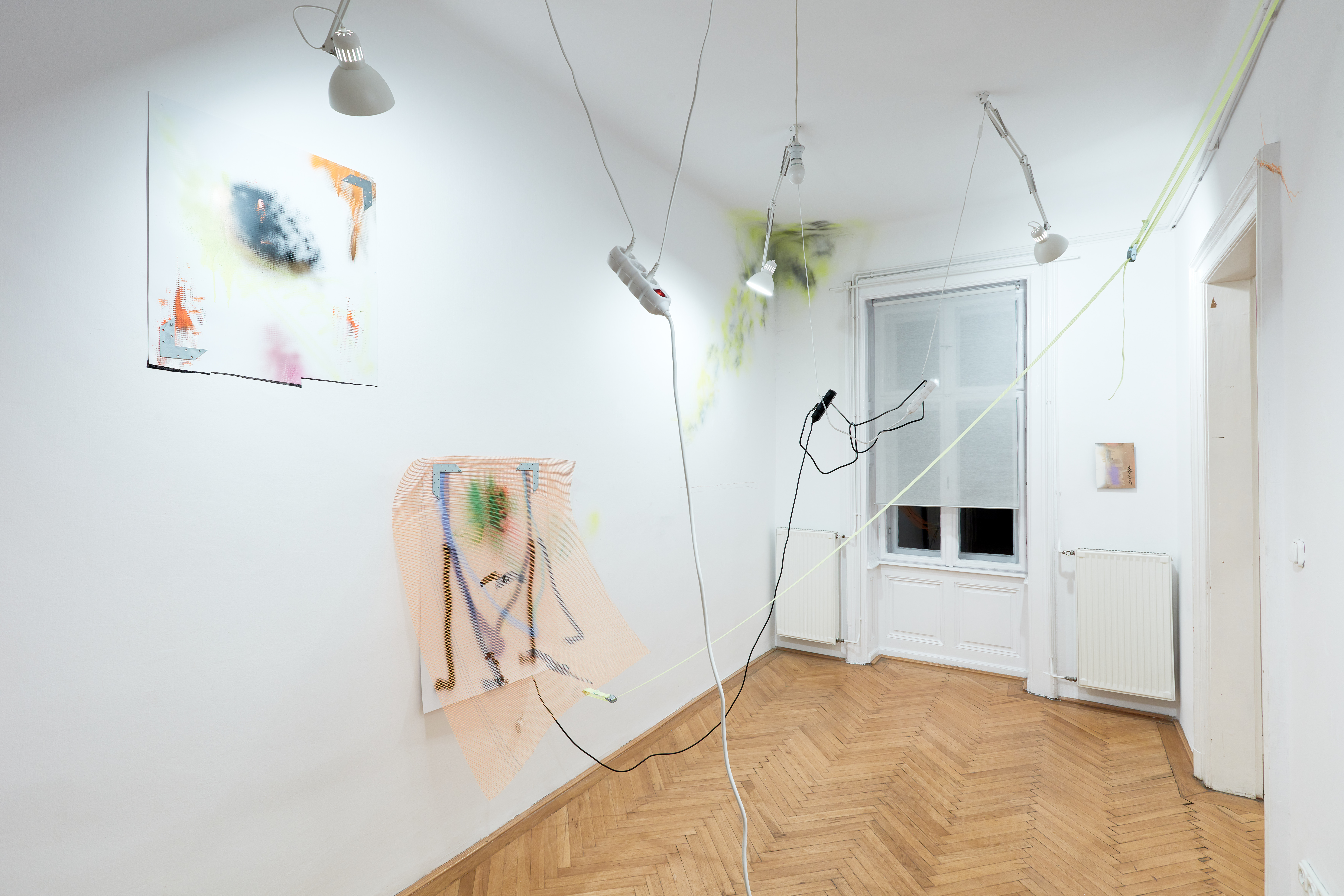
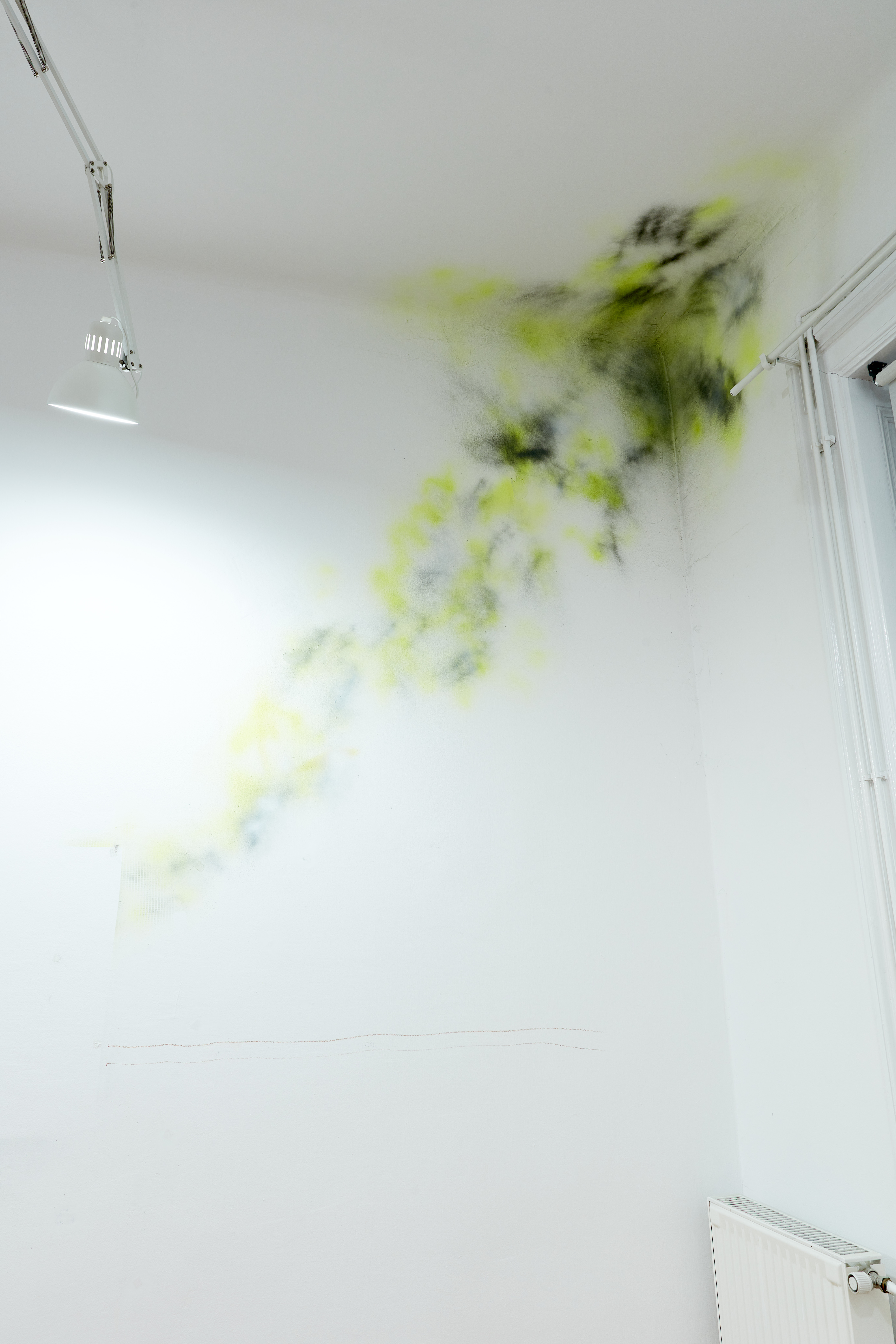
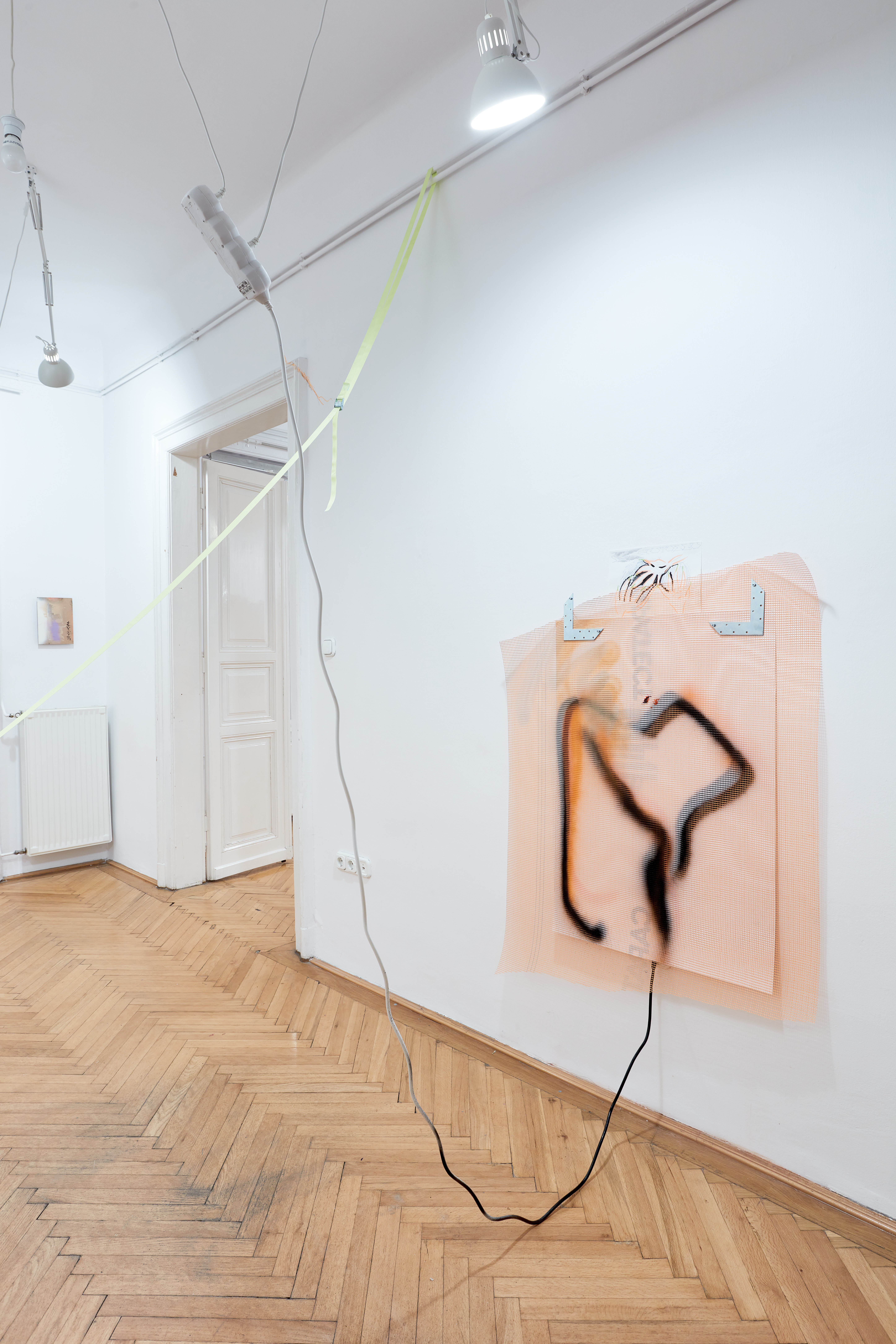
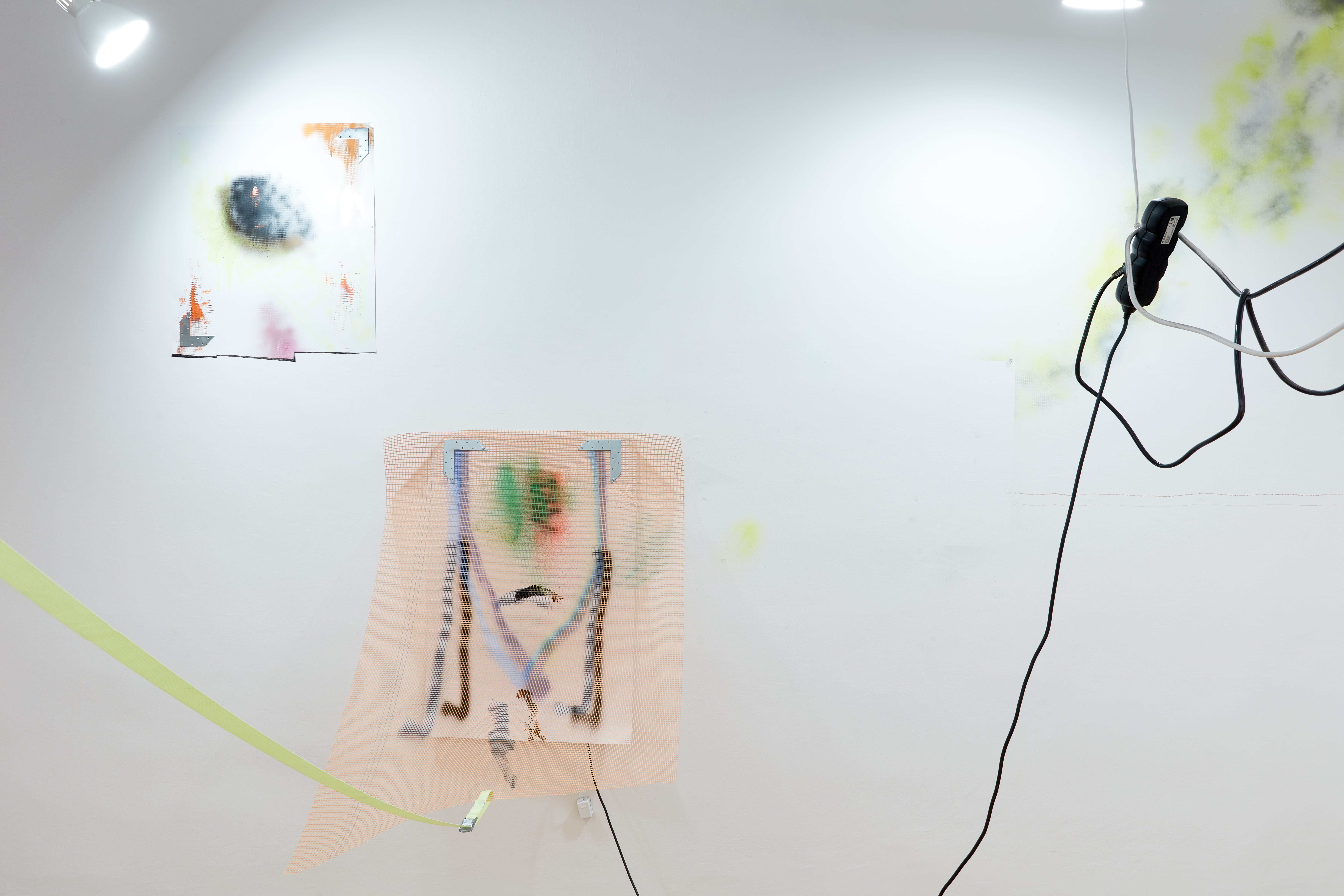


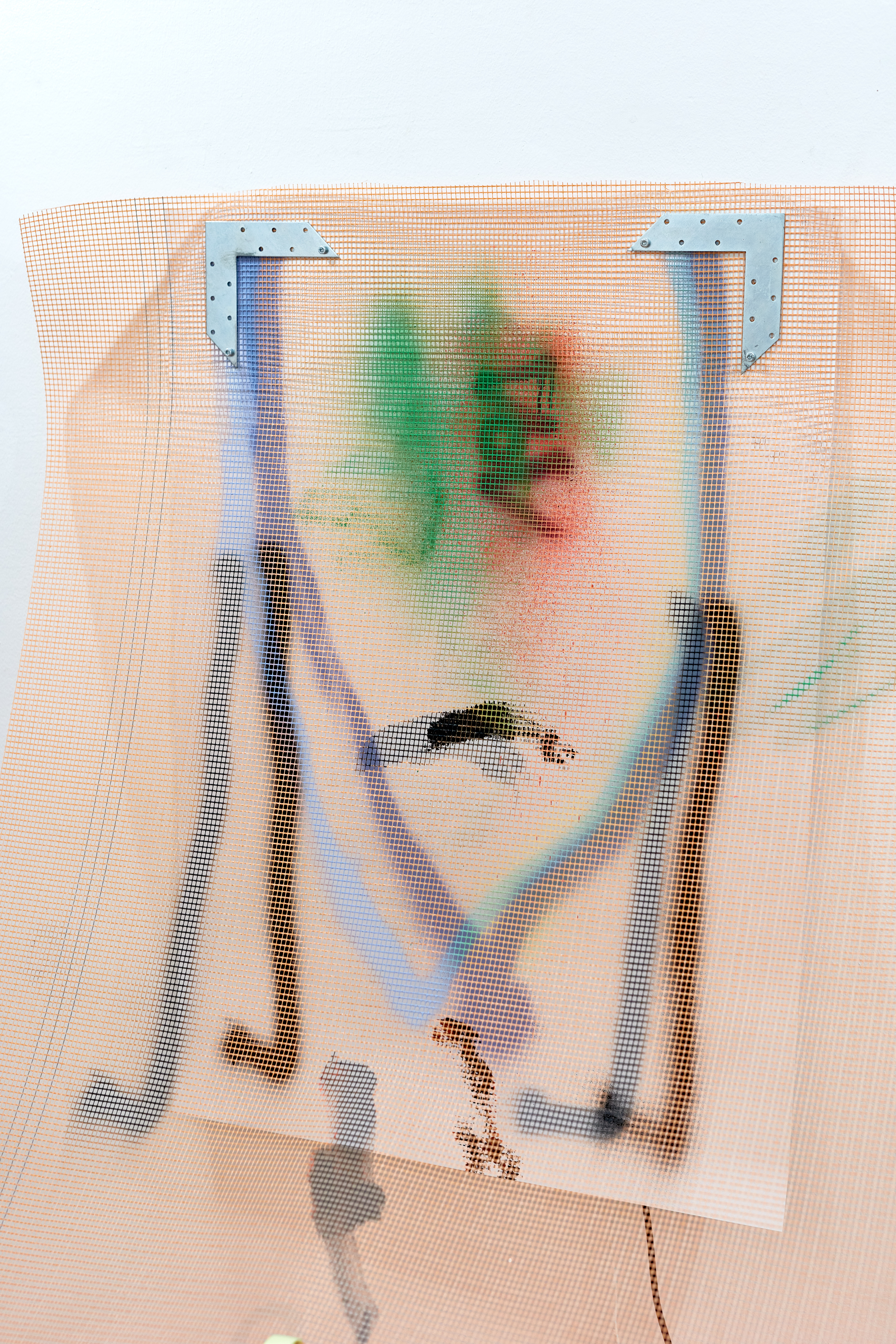
Ádám Ulbert (1984)
In his latest series ‘unnamed’, Ádám Ulbert tries to approach an extended ecological sensibility through a specific kind of biomorphism. In his creative process, he is interested in how our contemporary ecological thinking has been grounded in the new vitalist scientific and artistic trends that emerged at the turn of the 19th and 20th centuries. On the other hand, he focuses on how these ideas and visual realms filtered through contemporary avant-garde art and art theory into the imagined worlds of contemporary science fiction. Ulbert argues that the intellectual, technological, artistic and scientific new vision of world which developed at the turn of the 19th and 20th centuries, already comprised perspectives that no longer sought to view the ‘other’ in the world through an exclusively human-centred logic. The ecological sensibility that emerged in this period as a necessary new mentality, drew up an enlarged concept of life and nature that stood in contrast to positivist, mechanistic and objectifying secular views. Such was the case, for example, with Ernst Haeckel’s monism, Raoul Francé’s objective-biocentric philosophy, or even Pyotr Kropotkin’s anarchist theory of natural law based on mutual aid. Ulbert therefore examines with how this cultural tradition continues to influence and actively shape our current system of ecological feelings. His works attempt to reconstruct a way of looking back from the present to the future. Beyond the desire to name and categorise science, he is interested in the possibilities of non-human narratives of imagination and near-fiction. He presently calls this domain ‘map of biomorphic sensibility’. Can we imagine that certain parts of our supposedly non-organic environment function in a similar way to beings that feed off biological and spiritual organisms? Can stones, buildings, machines have a metabolism? If – as vitalist thinkers believed, among others – everything is based on and perhaps connected to biology, can non-organic beings be connected to organic bodies through some kind of elastic morphology? In fact, ‘biomorphia’ is a mode of empathic representation that maps an expanded field of the concept of being based on biology.
Laura Põld (1984)
Laura Pöld continuously explores fundamental human (and animal) needs, including community, safety and shelter. She started making paintings and installations referring to a sense of home and living abroad in the 2010s. In her latest work, she focuses on her choice of materials and their historical context, implementing traditional handiwork and building techniques like (primitive) ceramics and embroidery, which interest her as preservation of memory and experience. In her oeuvre, Põld has been engaged in creating a sense of place, combining and juxtaposing materially sensitive objects, narrative elements and memorabilia within the qualities of specific exhibition space. Her often large-scale constructions or installations either take over or interfere with the allocated exhibition venue and/or its context.
The exhibition is supported by NKA and Estonian Institute in Hungary.
